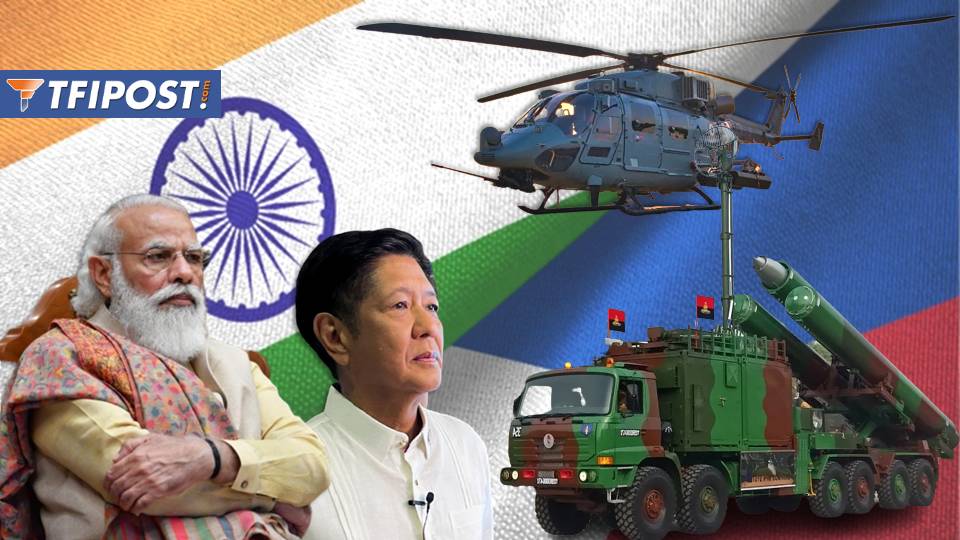A good defence is considered the best offense. When China was proactively trying to encircle India with its ‘String of Pearls’ strategy, it was very imperative for India to come up with some strong strategies to counter the Chinese influence in the region. In counter to China, India came up with an offensive ‘Necklace of Diamonds’ strategy, which not only liberated the region from the shadow of the Chinese, but also contained the dragon in its own backyard.
In an effort to contain China in its neighbourhood, India made a series of economic and defence cooperation with South China Sea countries. Further, the convergence of relationships became possible due to the realisation of the fact that all of them were fighting against the common imperialist enemy, who is continuously trying to undermine the sovereignty of the respective countries.
Dhruv Mk-4 in the Philippines arsenal
Reports suggest that after the acquisition of the BrahMos cruise missile, the Philippines now wants to acquire advanced light helicopters from India to replace its aging chopper fleet.
The indigenously designed and developed Advanced Light Helicopter (ALH-DHRUV) is a twin-engine, multi-role, multi-mission new generation helicopter in the 5.5-ton weight class. The major variants of ALH-DHRUV are Dhruv Mk-1, Mk-2, Mk-3 and Mk-4. The Mk-1 and Mk-2 are normal utility helicopters with a conventional glass cockpit. The Advanced Light Helicopter of version Mk-3 is made for defence services in high altitude operations, and Mk-4 versions are made for an armed attack, close air support and high altitude operations. The Philippines is interested in buying the armed version of Dhruv Mk-4.
Also Read: Malaysia wants India’s Tejas LCA at any cost
Philippines’ defence cooperation with India
The Chinese Navy’s constant confrontation with the Philippines in the Western Philippine Sea (South China Sea), with respect to the control of the Spratly Islands, has forced the country to raise the defence capabilities of its Navy. Further, the reluctance of the US to engage with China in case of any confrontation has further aggravated the security of Philippines. Therefore, in an effort to arm themselves with highly sophisticated weapons, the Philippines is on a spree of weapon buyouts.
In February 2022, the Philippines signed a USD 374 million deal with India for the supply of a shore-based anti-ship variant of the BrahMos supersonic cruise missile. The deal is important considering the involvement of Russia in making BrahMos. On one hand, the Philippines will secure its defence with the procurement of state-of-the-art missile systems against China while on the other; it will provide strategic leverage considering the ideologue alignment of Russia with China.
Read More: China is fighting tooth and nail to hold its supremacy in Asia
Further, the Philippines is also considering to procure indigenously developed Light Combat Aircraft Tejas for its dense forces. For the realisation of the deal, India is reported to be ready to establish the Maintenance, Repair and Overhaul (MRO) facility in the Philippines, to support the country’s aircraft fleet.
These defence cooperation with India by the Philippines are important considering the changing geopolitical situations. Traditionally, the US has been the overall security provider to the pacific countries. But its reluctance in direct engagement with China has forced these countries to enhance their own defence capabilities.
When in 2013, China refused to accept the judgment of the Permanent Court of Arbitration on claims over the South China Sea and continued to transgress within the Exclusive Economic Zone and continental shelf area of these countries, the sovereignty violation became a real threat. In violation of the United Nations Convention on the Law of the Sea (UNCLOS), China made its military presence on thousands of islands and challenged the sovereign rights of the neighbouring countries.
Relationship convergence was bound to happen as the countries could not afford to tolerate bullying for a too long. Here, in the Himalayan region with India and in the South China Sea with the Philippines, China was behaving like a modern imperialist power. This bullying nature of China brought the two nations together, and the defence cooperation was envisaged.
Support TFI:
Support us to strengthen the ‘Right’ ideology of cultural nationalism by purchasing the best quality garments from TFI-STORE.COM
